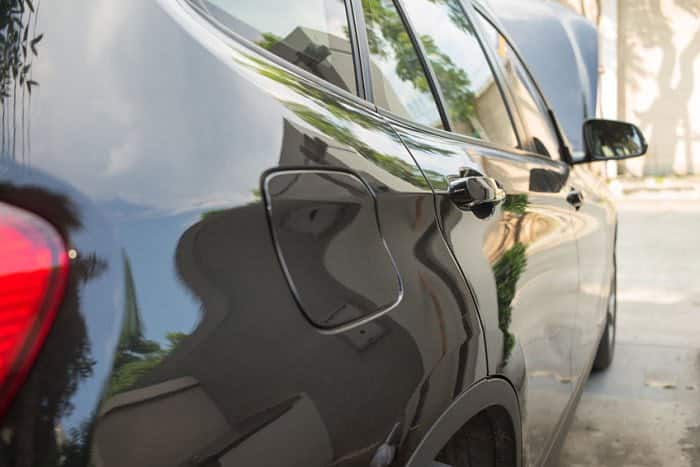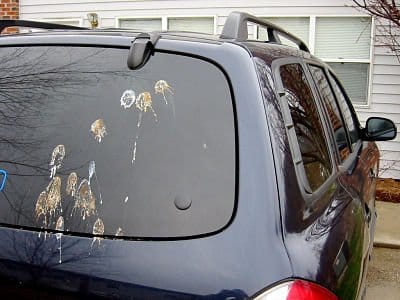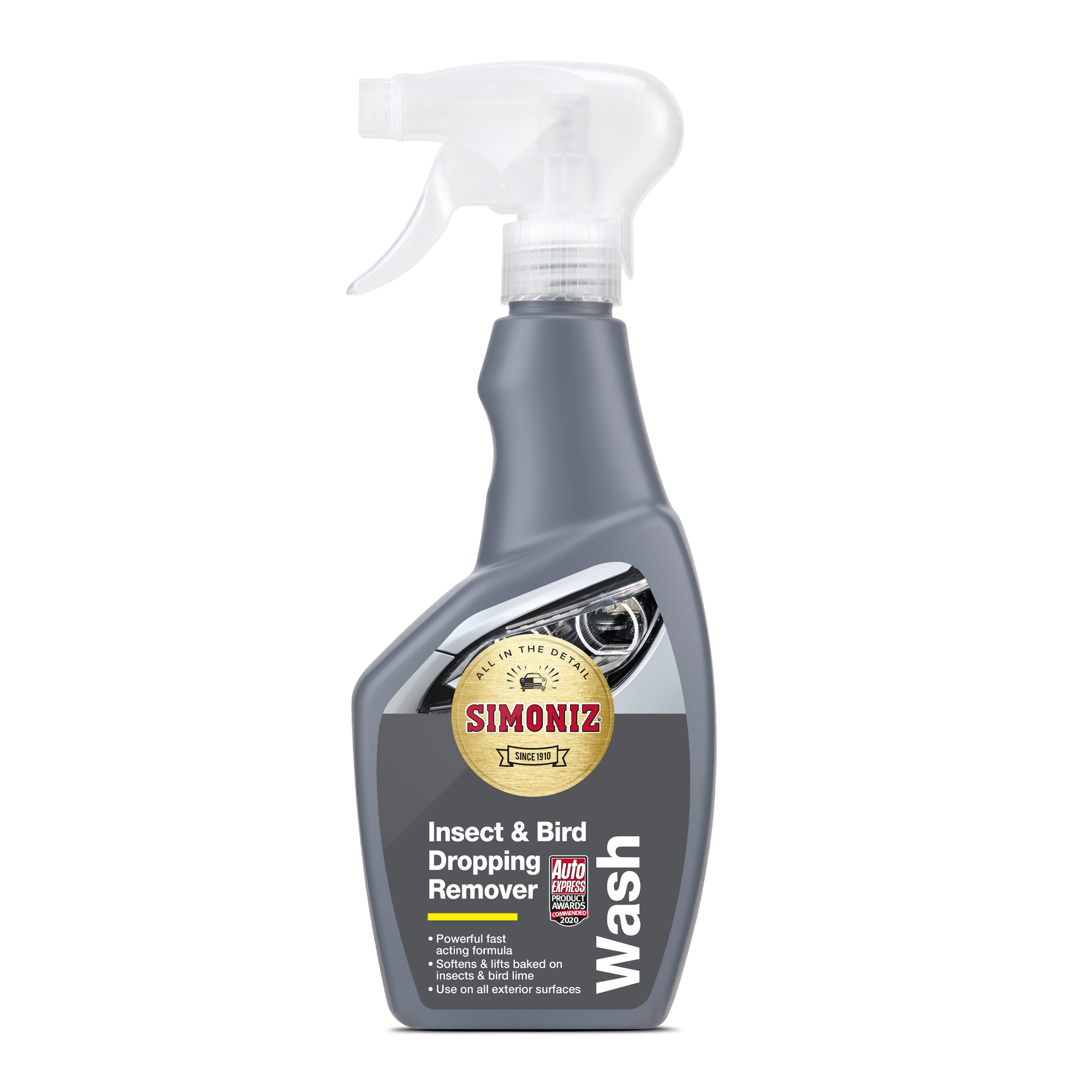Taking care of your car’s paintwork isn’t just a matter of keeping it looking its shiny showroom best; it’s about preserving its bodywork, protecting it from rust spots, and boosting its resale value should you want to sell it on.
Sadly, it isn’t just car park dings and malicious acts of vandalism that can ruin your car’s paint. From fingerprints to bird droppings, there are lots of innocent, everyday things that can blemish your car’s exterior.
Here we highlight 10 ways to ruin your car’s paintwork without even knowing it, providing you with practical steps on how to remedy common car cleaning issues — like safely removing dust and sap from the bodywork.
Solutions to Common Car Cleaning Problems
Use our handy at-a-glance guide below to quickly find the right fix for your car care woes.
| What’s the problem? | What’s the solution? |
| Fingerprints | Wash and dry car thoroughly. Then, apply polish in a smooth, circular motion; this will lift light marks and scratches from the surface of the paint. Finish with a fresh coat of wax to protect the surface and guarantee easy cleaning going forward. |
| Stone Chips | It is possible to repair stone chips yourself using a filling compound and compatible paint. Not confident at DIY? We’d recommend leaving these repairs to the professionals. |
| Bugs | To remove bug splats from your car, start by giving it a thorough clean. Then, using a specialist cleaner, soak the stains to make them easier to remove, before wiping off. |
| Bird Droppings | As with bugs, you’ll need to wash your car before soaking bird droppings to make them easier to remove without the need to scrub the paintwork. Try Insect & Bird Dropping Remover for safe and effective cleaning. |
| Tree Sap | It just so happens we have a full guide on removing sticky residue like tree sap from your car. Get the job done in minutes with our expert advice. |
| Water Spots | Removing water spots start with washing and drying your car thoroughly. Then, apply a coat of good-quality vehicle wax to protect the paintwork from future blemishes. |
| Fluid Stains | Petrol or oil stain on your car? Not to worry. Start by washing and drying the paintwork before applying polish in a smooth, circular motion. Finish with a coat of wax to avoid future staining and blemishes. |
1. Fingerprints
Children or annoying passers-by love to write “Clean Me” onto a dirty car. Little do they know however, that their fingertip graffiti can cause lasting damage to a vehicle’s paintwork.
How? Fingerprints grind dirt and debris into the paint, leaving a lasting blemish that can be very difficult to remove. So if you notice fingerprints on your car, it’s best to deal with them sooner rather than later.
How to remove fingerprints
Give the paintwork a thorough wash and check for any scratches or abrasion. Then, use a good-quality polish to remove any light marks or scratches, applying the product in a circular motion to ensure an even finish.
2. Stone Chips
When it comes to ruining a car’s paintwork, chips caused by loose stones and pebbles are a repeat offender. Stone chips can cause lasting damage to your car — particularly on its bonnet and bumper.
Annoyingly, no matter where you live or how carefully you drive, stone chips are almost inevitable. But given that they can lead to rust and further degradation of the paintwork, it’s vital that you fix them as quickly as possible.
How to remove stone chips from vehicle paint
As far as repairing car paintwork goes, stone chips are among the easiest problems to fix yourself. So if you’re dab hand at DIY, you should be able to give it a go yourself.
To fix a stone chip, you’ll need to first sand down the affected area to remove any damaged paintwork. Then, apply a specialist paintwork filler as smoothly as you can. When it’s set, sand this down too to achieve a smooth finish.
From there, it’s a case of applying a colour-matched paint before finishing with a new layer of clear coat. When everything is dry, we’d also recommend a coat of wax to ensure maximum protection and shine.
If you feel like having a go at repairing a stone chip yourself, take a look at the Simoniz range of paint and maintenance products.
3. Bugs
Dead bugs are surprisingly acidic and difficult to remove, and can cause lasting damage to your paintwork if not dealt with swiftly. Of course, it’s impossible to avoid bug splatters while driving, but you can still do something to stop them impacting on the finish of the paint.
How to remove bug splats from your car
To remove the insects easily, we’d recommend using a concentrated car cleaning solution that’s designed for tough stains and deposits. For example, our Insect & Bird Dropping Remover is designed to dissolve stubborn deposits like bug splats and bird poo, so you don’t need to scrub the paintwork. Just spray on, wait for the product to work, and then wipe off for easy, effortless cleaning.
4. Bird Droppings
Bird droppings aren’t just unsightly, they’re acidic and can cause permanent damage to your car’s paintwork. Not only that, but birds often eat nuts, seeds and bits of gravel which can scratch your paint on impact.
Although bird poo is unavoidable, you can make it less likely by avoiding parking under trees or lamp posts. If you live in an area with lots of greenery, or by the coast, it could be worth investing in a car cover to protect your paintwork when it’s parked up too.
Removing bird droppings from a car
To remove bird droppings you’ll need a high-quality cleaner that’s tough on stains but not your paintwork. Since bird poo can become ‘baked on’, you need something that will dissolve it and make it easy to remove without the need to scrub at the paintwork.
For this, we’d recommend the cleaner we mentioned above, Simoniz Insect & Bird Dropping Remover. Spray the product directly onto the bird droppings, wait a few minutes for it to soak in, before using a gentle lifting motion to lift the dirt off the paintwork with a clean, damp microfibre cloth.
5. Tree Sap
Park beneath a tree for long enough, and your car will receive a covering of sap which can be difficult to remove — especially if it dries hard. Sap is incredibly sticky, and any attempt to wipe it off without using the proper product will only spread the problem to a wider area.
You also run the risk of scratching and damaging the paintwork if you scrub at tree sap with the wrong type of tool or product. That’s why it’s important that you treat tree sap with the right products, and remove it from your vehicle’s paintwork as quickly as possible.
How to remove tree sap from your car
With the right products at your disposal, removing tree sap from your car’s paintwork needn’t be a chore. You’ll need a high-quality cleaning product that’s safe to use on car paint, and one that’s strong enough to cut through residue like tree sap.
Simoniz Tar, Sap and Glue Remover is brilliant for lifting stubborn sticky substances from your car, cutting through all kinds of dirt and debris. Once you’ve cleaned it all off, it’s a good idea to re-apply a layer of wax to the vehicle for protection against future deposits.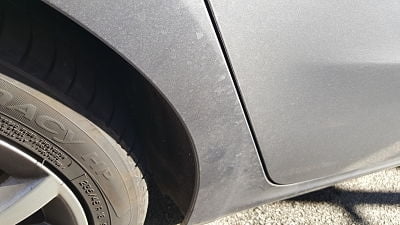
6. Water Spots
Live in a rainy part of the country or park near an automated sprinkler, and your car will soon end up covered in water spots. While you wouldn’t think water could cause lasting damage to your paintwork, these annoying spots are difficult to remove due to the minerals they contain.
All water – whether it’s come from the sky or a tap – contains particles that can cling to the surface of your car’s paintwork. And these particles contain salt. Over time, the presence of water spots can degrade your car’s overall finish, making it more difficult to achieve a long-lasting shine.
How to remove water spots and marks
To remove water spots and marks from your paintwork, wash your car with a car shampoo, the dry it thoroughly with a microfibre cloth. After you’ve removed any water blemishes, apply another layer of wax to your car to protect the paint from future imperfections.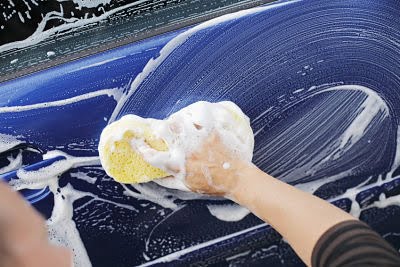
7. Forgetting to Wash Regularly
Cars require regular washing to keep their exteriors in tip-top condition. If you don’t clean it regularly rust patches could soon develop, particularly if the car is left uncovered through the winter months.
At Simoniz, we’d recommend washing and shampooing your car on a fortnightly basis, especially during the autumn and winter. Waxing is also a very important step in taking care of your car’s paintwork; wax at least twice a year for complete protection.
How to remove dust from your car
One of the major oversights of neglecting to wash your car is the amount of dust that can build up on the paintwork, dulling the finish and causing visibility problems. When your car is clean but covered in dust, giving it a full shampoo can seem like overkill.
Instead, use a high-quality duster to gently sweep away the dust from your paintwork, without having to wet the car. Make sure to use a premium-quality duster that’s designed for use on cars, to avoid small scratches and abrasions. Use a slow sweeping motion to lift the dust from the surface and avoid applying too much pressure.
8. Fuel Stains
Whether your car has sprung a leak or you’ve had a spillage while refuelling, fluids like petrol, diesel, engine oil, and brake fluid can cause damage if they come in contact with the paintwork – leaving marks and stains which can be virtually impossible to remove if left for too long.
Removing vehicle fluid stains from your car
Give it a wash as soon as possible and, using a circular motion, remove the stain with a clean microfibre cloth. If the stain won’t come off, wash the area again before drying it thoroughly with a second microfibre cloth.
Then, apply good-quality car polish to the affected area, again using a circular motion. The micro-abrasive action of the polish should help lift the stain. Once the stain has been removed, apply a layer of wax to help protect the car from future stains and imperfections.
What does brake fluid do to paintwork?
As car paints and brake fluids have advanced, there’s now less danger of causing damage to your car in the event of a spillage. Old types of brake fluid were very caustic and would act like a stripper when coming into contact with car paint.
Now, advanced vehicle lacquers mean that metallic paints are less susceptible to acid damage from brake fluid. You should still be careful, however, especially when using an older form of brake fluid, such as DOT 2 or DOT 3.
9. Prolonged Exposure to Sunshine
Thanks to the UK’s reliable cloudiness, it isn’t often cars suffer prolonged exposure to sunlight. If you live in a hot country, however, or Britain enjoys a particularly long and sunny summer, sun exposure can cause your vehicle’s paintwork to fade, as well as potentially damaging the interior — both of which can be difficult to reverse.
The best way to avoid prolonged sun exposure is to park in a garage or cover the car with a specially made car cover. Failing that, try to park in a shady spot wherever possible.
10. Incorrect Cleaning
Regardless of how often you wash and shampoo your car, incorrect cleaning can cause permanent damage to the paintwork. Below, we list common car cleaning issues and how to avoid them:
- Dirty wash accessories — As soon as a cloth, sponge or other accessory gets dirty, it’s easy to transfer that muck back on to the paintwork, which could result in swirl marks or other areas of abrasion. To avoid this, always use two buckets when cleaning your car — one for clean wash water and the other for rinsing your accessories. This makes sure that no dirt can come in contact with your car after it’s been removed.
- Shampoo errors — Make sure the shampoo lathers well on the paintwork, with a good amount of suds and foam. It’s this creamy lather that lifts dirt and muck from the paintwork. Use too little shampoo, and you’ll find you have to work harder to get your car clean — and all that scrubbing can soon lead to small scratches and swirl marks. You should also never allow shampoo to dry; rinse it off straight away to prevent it from setting.
- Waxing errors — Never wax your car in direct sunlight. The heat causes the wax to set hard before you’ve had a chance to buff it, and this can be difficult to remove. Instead, park in a shady spot and work periodically, applying wax to a single panel and buffing it to a high shine, before moving on to the next one. This ensures the wax doesn’t have time to dry hard on the paintwork.
If you’re proud of your car, don’t let everyday life ruin its showroom finish. Instead, keep your car clean and protected with Simoniz’s range of cleaning products. To find out more about our products, visit the Simoniz website.
